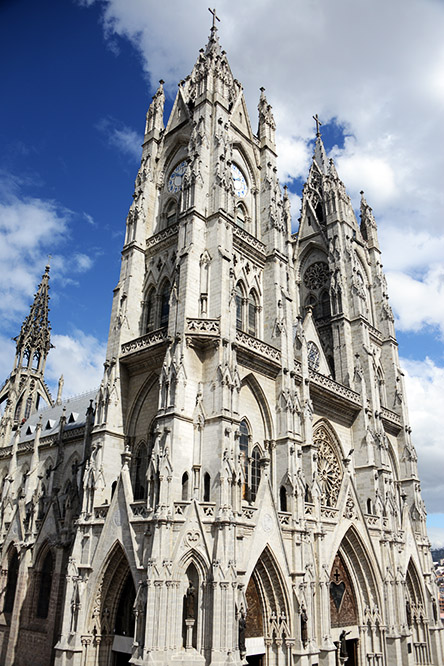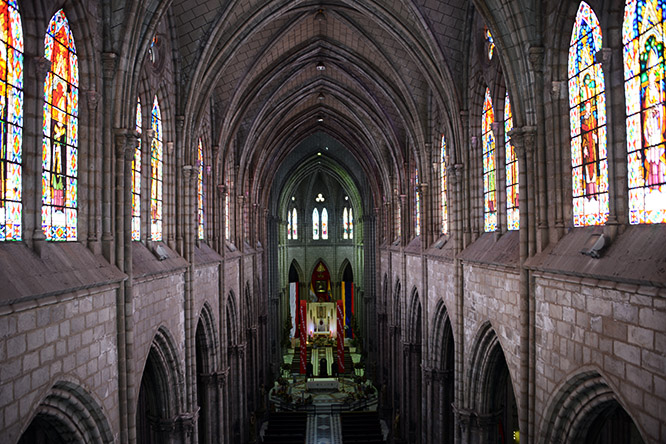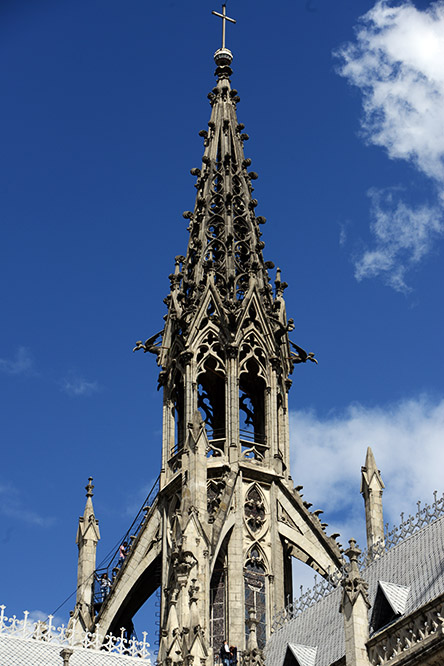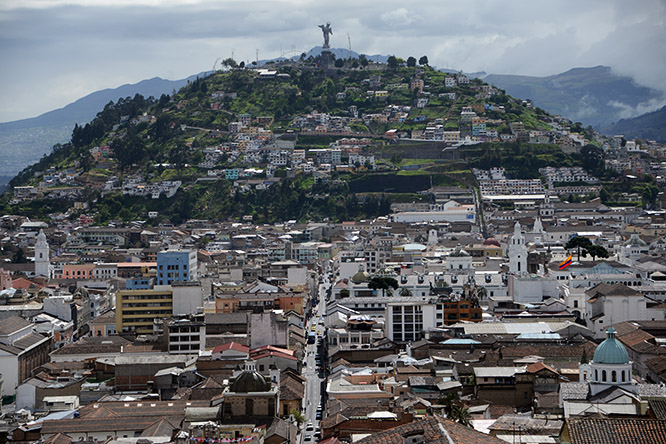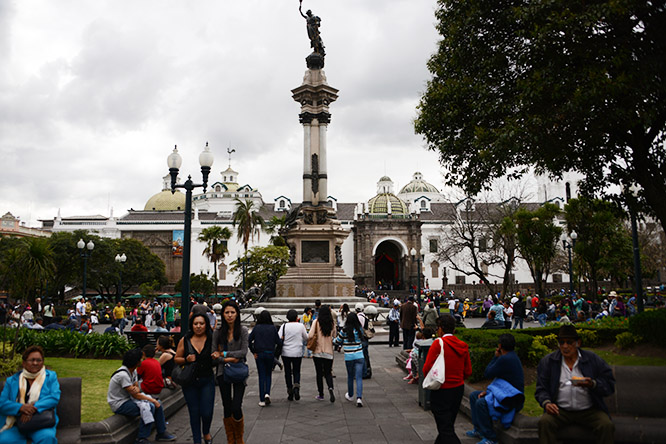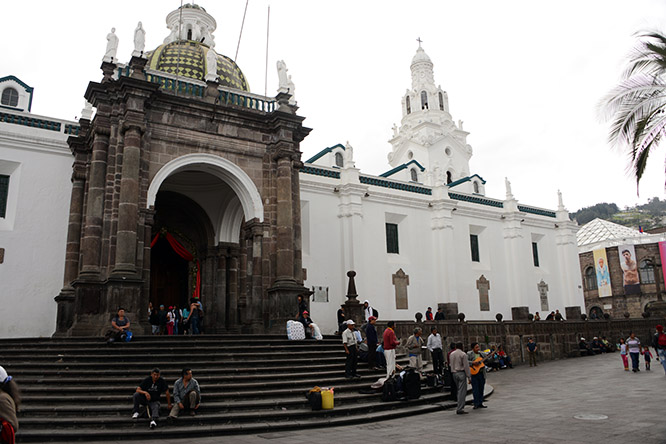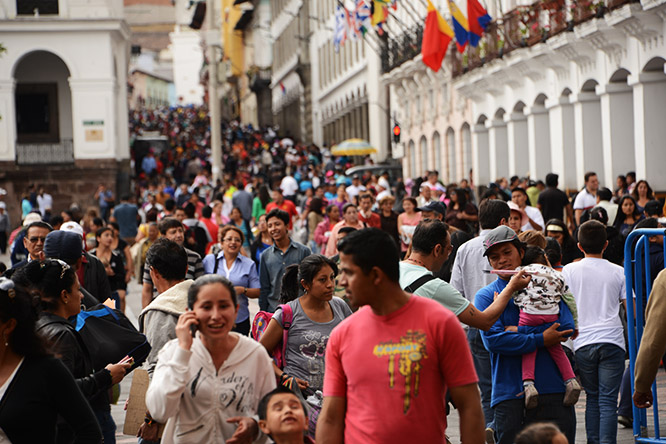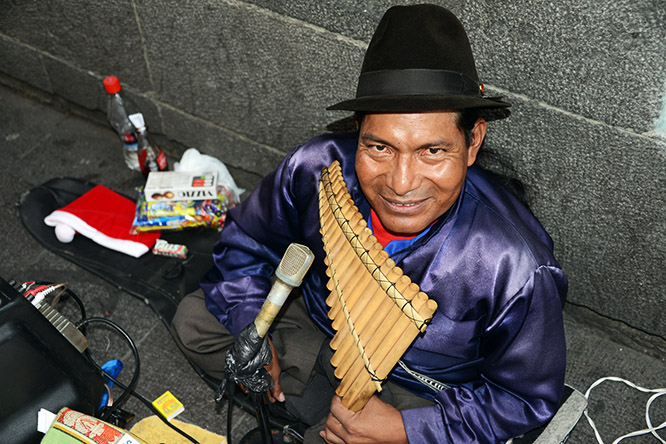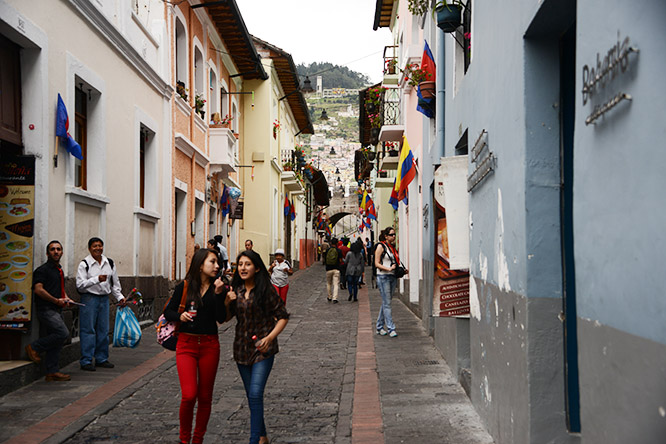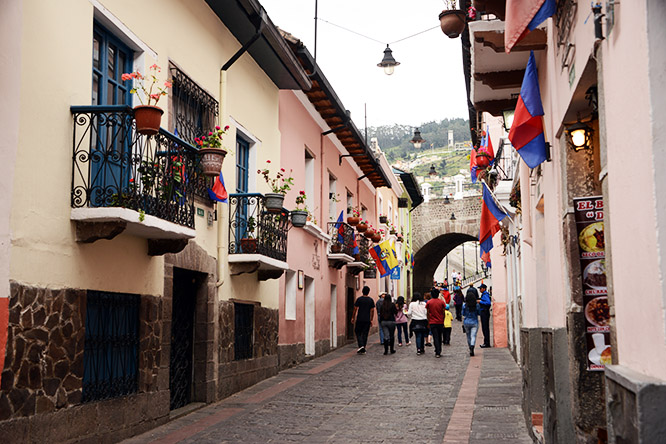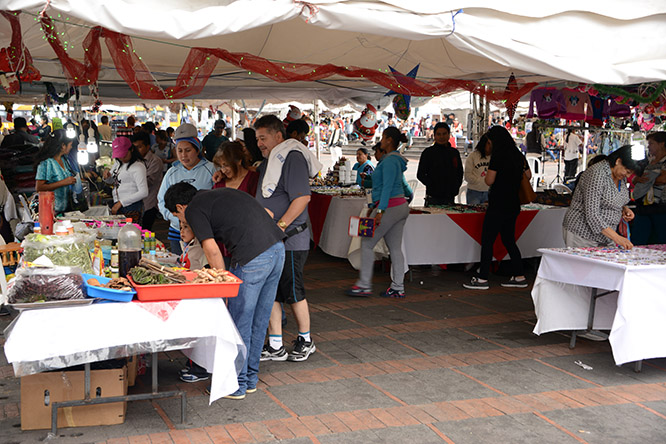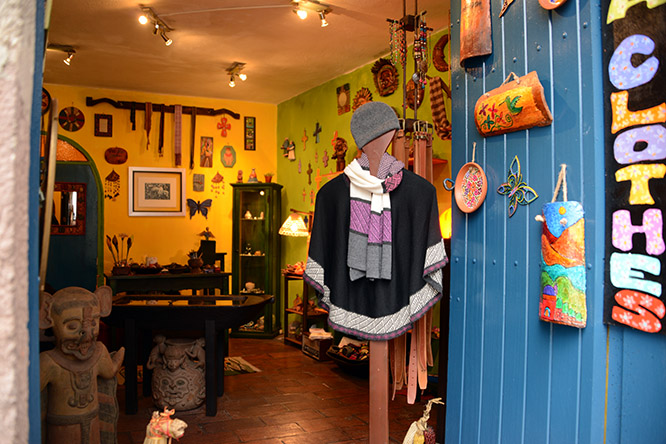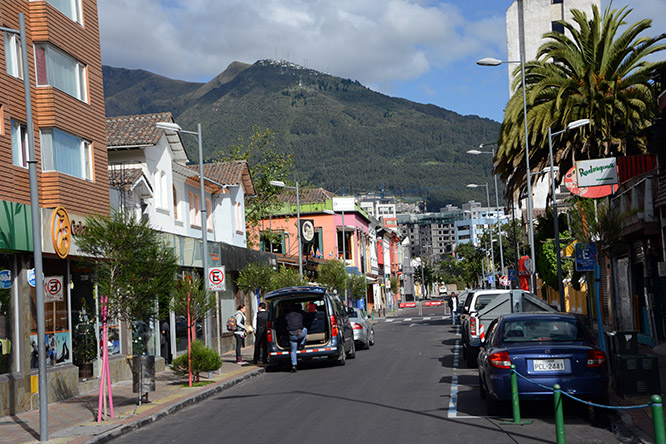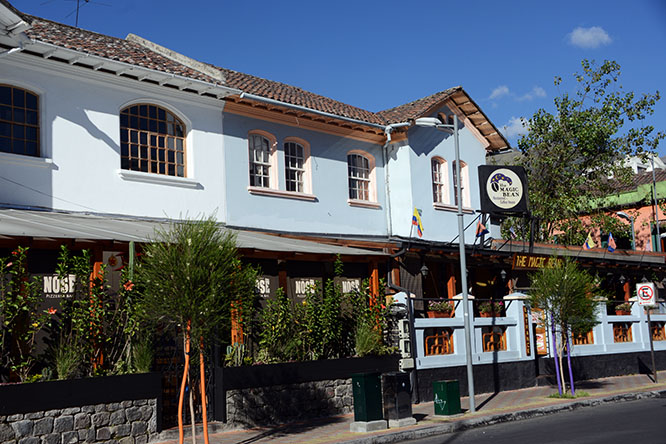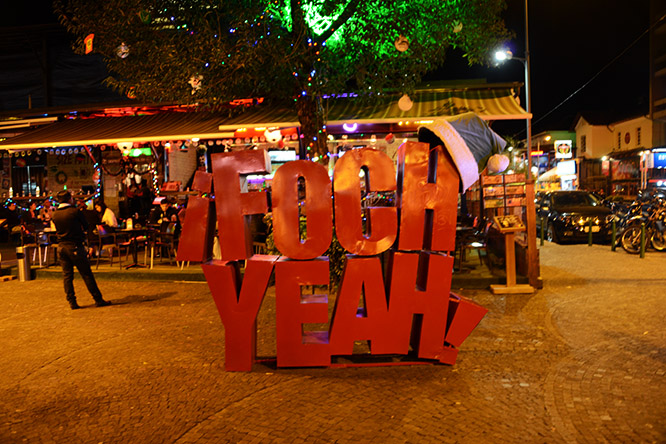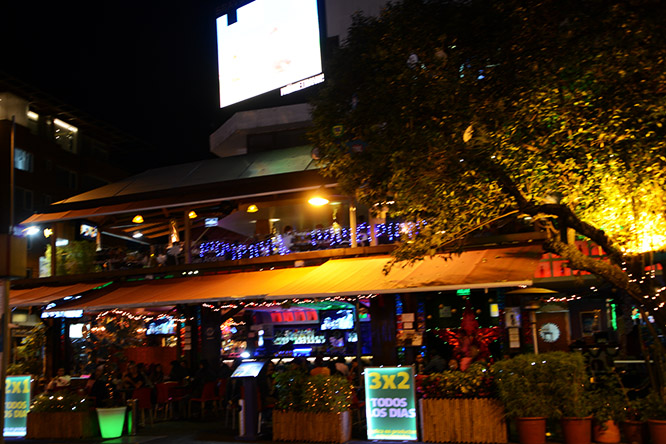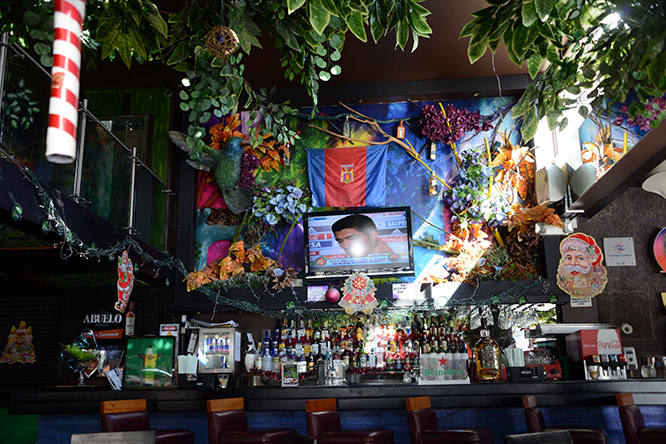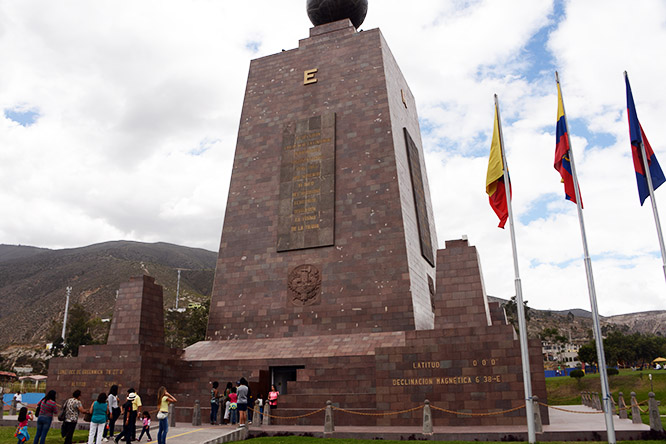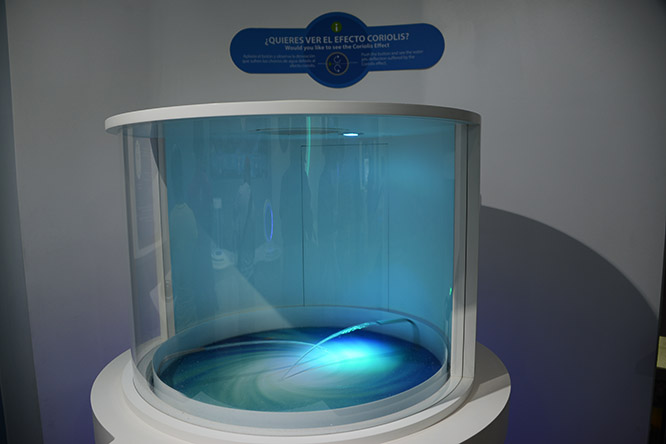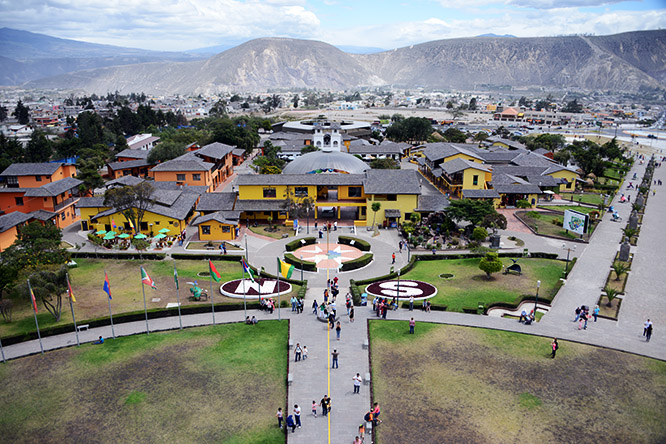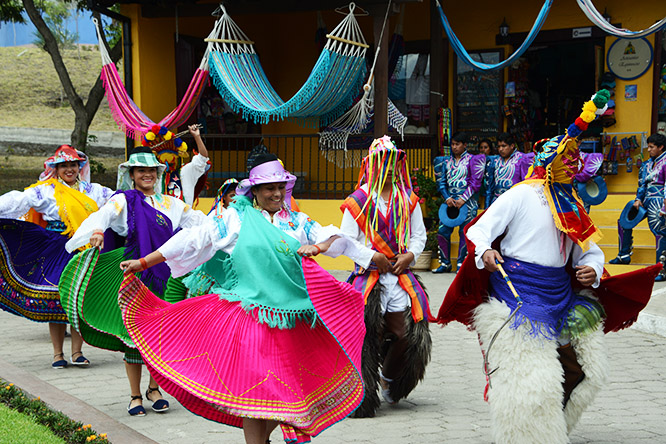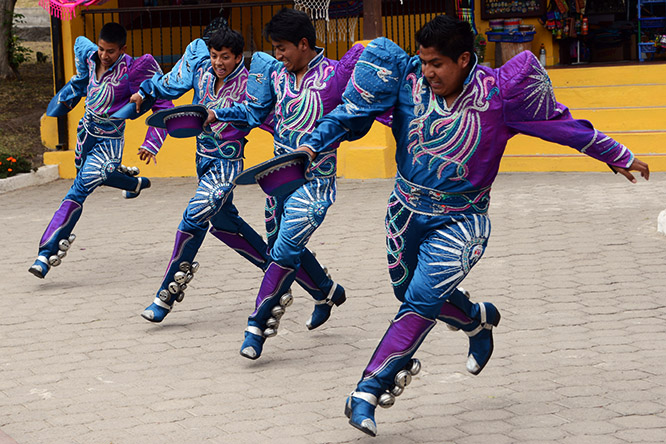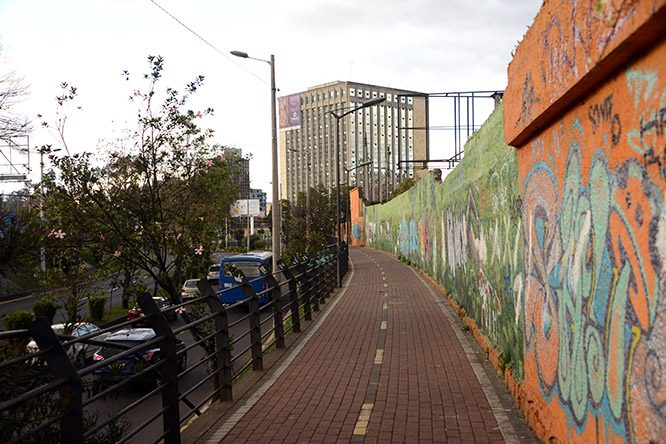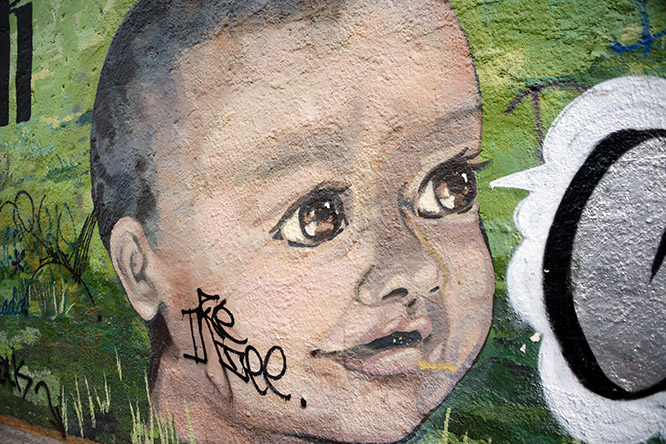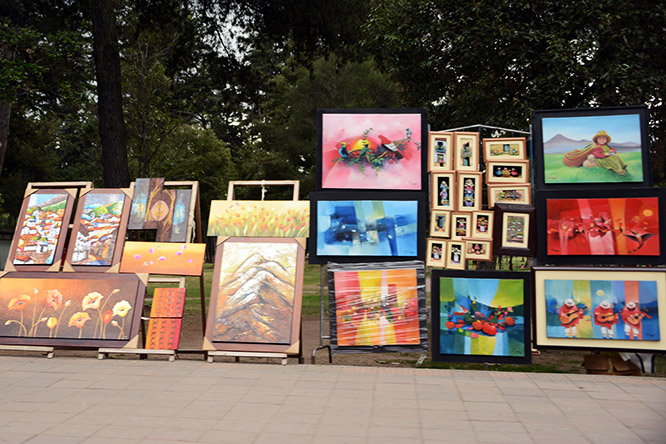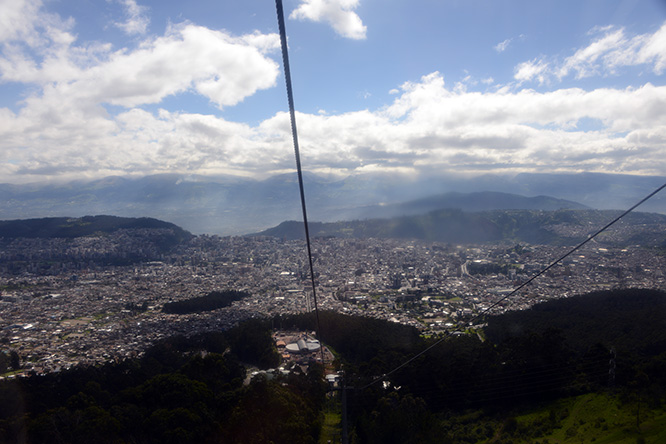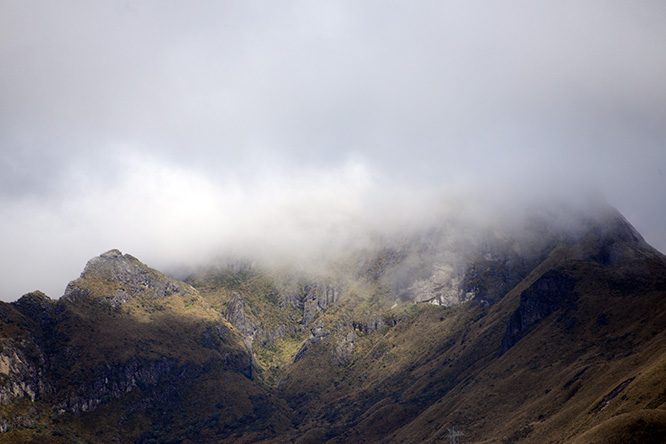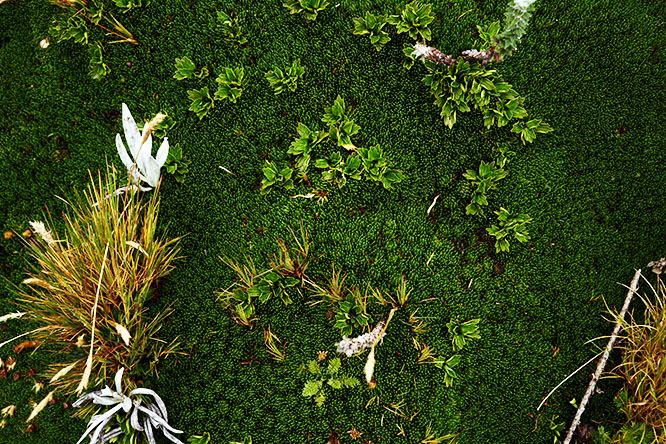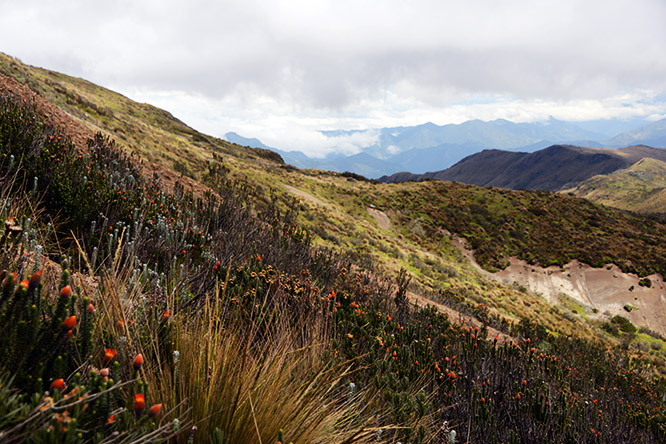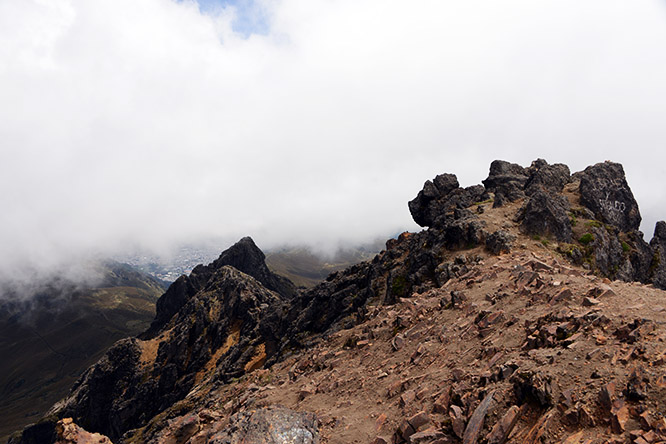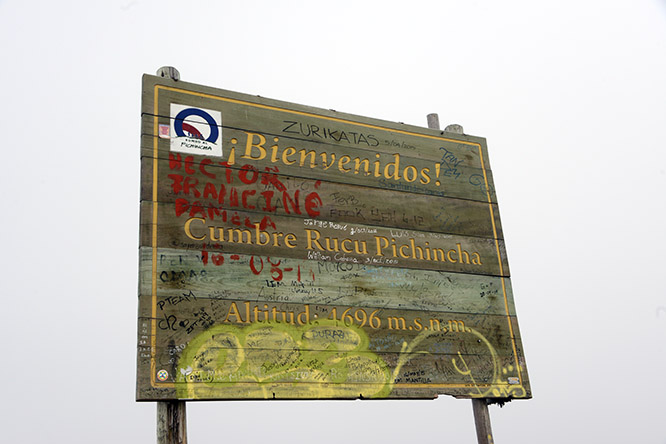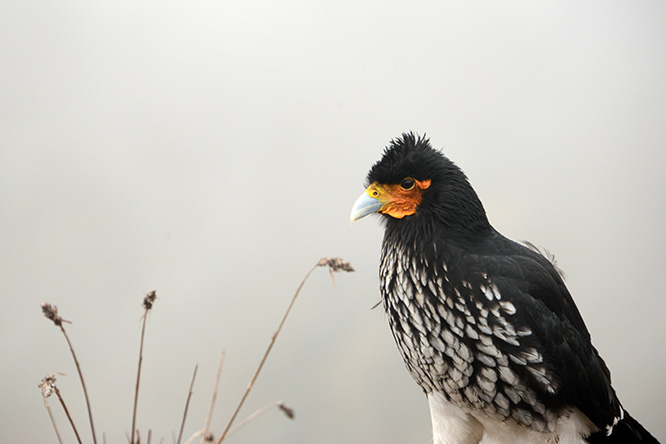Visiting Quito
The capital Quito was founded along the equator at an altitude of 9,300 feet (2,850 meters) making it one of the highest capitals in the world. I’ve been to Quito twice, the first time my goal was simply a traveling one, while the second time I was here to climb as many mountains as possible. Quito has excellent access to some of the best climbing in the world, so I made a return to a country I’ve already been to rather than going somewhere new.
Quito is a sprawling city that goes for miles. The official population is only 1.4 million, but if you get a good vantage point you’ll see that small houses and buildings go out as far as you can see. Built up along the mountains, there are endless places to get a great view of Quito. This one above was taken from the historic quarter’s Basilica Voto Nacional, photographed below.
The Basilica Del Voto Nacional or National Vow in English is the most important church in Quito, and actually is the largest neo-Gothic basilica in the western hemisphere! The basilica is so enormous it’s actually difficult to photograph without using some distance overlook. Construction began in the late 1800’s and the cathedral was finished in 1902. In 1985 the cathedral was blessed by Pope John Paul II, who has his statue above the main entrance. Above is the inside of the cathedral, below shows one of its gothic towers that you can climb and get an amazing view of the city.
From one of the top floors on the basilica, you can get the best view of the Panecillo photographed above. The Panecillo gets its name from early Spanish settlers who thought the hill looked like a piece of bread. The Panecillo holds a monument to the Virgin Mary photographed below. Both times I visited there was overcast! A local I met explained how some of the poorer suburbs are located behind the Panecillo. Apparently some of those residents complain that the Virgin Mary’s back is facing them, even though their neighborhoods were built after the statue was erected.
Several blocks away from the Panecillo or a short taxi ride away is Quito’s Plaza Indepencia. This is the center of the city, and one of the most packed places I’ve ever been to! The plaza was founded in the 16th century, but it wasn’t until two hundred years later that it became truly developed. There are so many people in the plaza it’s hard to walk around. I took a taxi here and the driver had lived in the United States for much of his life. We were able to have some good conversation and he described all the changes in Quito. I had been to Quito 10 years prior myself, but I found that I hardly remembered much of it. He described how it was much more dangerous back then, and nowadays it’s heavily policed and little crime.
I didn’t remember Quito being a particularly dangerous city when I had visited the first time, but for sure there is a much heavier police presence now. I walked around with my expensive camera dangling from my neck in dense crowds without worrying about being targeted. The only sketchy event I had in Ecuador was when I took a bus from Quito north. Some guys were sitting in front of me and behind me on the bus, and one of them pretended to drop changed under my seat. He came forward and asked to look around, probably an excuse to see what I had. Later a girl sitting on the other side of the bus came up to me and told me in Spanish that these guys were planning to rob me. I don’t think it was a serious operation they were doing, but more looking for opportunity. I moved to another seat and they left the bus before my final destination, so nothing happened.
Of course with all the people running around the city center, you’ll find plenty of vendors selling food, souvenirs, or singing like this guy above. I bought one of his CD’s that he had produced, some native music that is popular in the northern Andes. I had bought a CD in New York City once with the same type of music from two guys from Peru, but I sadly left it in a rental car one day!
I didn’t visit any of the museums both times I visited Quito, but there are over a dozen major ones and many are in the historic district. I was happy exploring the historic district and passing through all the random side streets.
In one of the smaller plazas I came across they had this city market above. Like Plaza de la Independencia, there were plenty of vendors here and some musicians as well. This market was less touristy and seemed to fill the demand for locals. Most of it was a farmer’s market of sorts, with some household items and a few stands that had souvenirs. The photo below shows a more modern shop in the historic district.
One of the most famous districts in Quito is Mariscal. I must have stayed here the first time I visited the city, but somehow I don’t recall exploring it or doing much here. Maybe it just really transformed over the past 10 years! Mariscal is essentially the tourist center of the capital, packed with hostels, hotels, bars and nightclubs. During the day time, Mariscal is exceptionally quite and deserted. Nearly everything is closed, even early in the afternoon. Empty beer bottles, dried up pools of vomit, and other signs of the craziness that is to return are all over the streets. Otherwise, it’s a nice and colorful place during the day time.
The heart of Mariscal is Plaza Foch. The plaza is pretty small but it’s a popular meeting place for day trips and other excursions. Some local genius came up with the concept of “Foch Yeah” and now it’s on every restaurant’s napkin, server’s shirt, wifi password etc in the Mariscal.
I spent almost a week in Mariscal and with so much time I made little effort to photograph this place at night, always thinking I had more time. When I did go out, I only took a few pictures and so I didn’t capture the craziness that can happen here. It’s a safe district because like the historic area, it’s heavily policed. I don’t think you’ll have an issue of safety here, even if you’re intoxicated. The biggest trouble I had was when I was trying to sleep early in order to prepare for heading out into the mountains the next day. Those nights I couldn’t sleep because of wild clapping and blasting music that seemed like the room next door in my hostel was a nightclub. The clapping especially annoyed me and I got little sleep some of the nights here.
One of the most interesting places to visit in Quito is the Mitad del Mundo Monument. This means center of the world, and it’s location is just that. At a latitude of exactly zero degrees, the monument is located precisely on the equator, from where Ecuador of course gets its name from.
The inside of the monument is actually a large museum that spans several floors. Here the museum goes over many facts and myths about the different hemispheres. The above example demonstrates the Coriolis effect. Another example dispels the myth that water naturally flows in reverse direction when draining in different hemispheres. My understanding is there is a scam artist museum nearby that claims otherwise. They even offer demonstrations but will refuse to allow you to try it yourself.
I thought the Mitad Del Mundo was nothing more than the monument and a museum, but it’s actually more of a small amusement park here. There are plenty of restaurants and shops with annoying people in the streets trying to pressure you to visit. There are a few other places to visit such as a planetarium and plenty of activities for kids. The picture above was taken from the top of the monument over looking the entire complex. The line you see is the actual equator, with the northern hemisphere on the left and the southern hemisphere on the right.
I’m not sure if these occur daily or only on the weekends which is when I visited, but when I was here I came across this free performance. It was pretty long and had two different groups dancing, a larger group of all ages above and another group of four young guys photographed below. I didn’t visit Mitad del Mundo the first time I was in Ecuador and am definitely glad I didn’t miss it again!
I’ve been to some random parts of Quito for various reasons. The picture above and below were parts just outside of Mariscal, so still pretty close to the city center. Something bad about Quito that I noticed is the entire city is covered in graffiti. Even several walls inside of the basilica were tagged with people’s names and messages. The mural above along the sidewalk was intentionally done with street art, but eventually covered by graffiti. It seemed that other than one person, the baby below was mostly preserved.
One of the parks in Quito had tons of art for sale along a main road. They seemed to be all paintings from local artists. I took the bottom photo from a distance using my zoom lens, and later realized I had some leaves from a tree in the way!
One last popular destination on the outskirts of Quito is the Teleferico. This is actually the second highest cable car in the world and will drop you off at 13,300 feet (4,050 meters), which was perfect for me since I was trying to acclimatize for some high altitude mountains in Ecuador. Once at the top of the Teleferico, you can get some more amazing views of Quito. From here you also have easy access to the famous mountain Rucu Pichincha. Since I spent so much time in Quito I was able to see Rucu Pichincha many times on a clear day, but when I visited to climb it it was cloudy as photographed below.
Rucu Pichincha is visible from all of Quito and takes a few hours to hike to the summit after the Teleferico. It’s a popular for locals and tourists who just want a good hike, and also people like me who are using it to get adjusted to even higher altitude climbs. Aside from the benefit of the climb, I was surprised by how green and scenic it was up here!
The hike normally takes about three hours from the top of the Teleferico. Despite me being in Quito for just 24 hours, I was able to hike to the summit in only two hours without any altitude problems. This gave me some overconfidence, and later on the same trip I was defeated by altitude for the first time in my life near 20,000 feet (6,000 meters) for moving up too fast!
In any case, reaching the summit of Rucu Pichincha was definitely a fun activity with some rewarding views and even wildlife. At the summit I caught a pair of Ecuadorian Caracara’s with one photographed below. The summit of Rucu Pichincha is 15,402 feet (4,696 meters).

